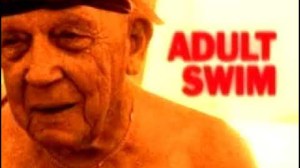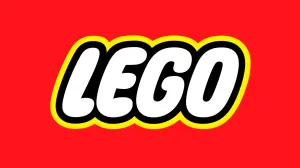Superman wasn’t the first costumed avenger to grace the comics page, but he was the character that served as the first superhero in the way they exist today. The Man of Steel has been in print since 1938, with thousands of comics to his name and thousands more team-ups and guest appearances. Faster than a speeding bullet, more powerful than a locomotive, and able to leap tall buildings in a single bound, Superman has long been saddled with a reputation for being “too powerful” and therefore difficult to relate to. It’s a fairly easy argument to rebut, but it gets traction because it makes sense at face value.
Videos by ComicBook.com
The best-selling graphic novel ever to feature Superman is The Death of Superman, which…well, that can be a problem. Even though it holds up reasonably well for a superhero comic created 30 years and several editorial regimes ago, it is also pretty loaded down with continuity from its era, and only a really good starting point if the reader is already pretty familiar with the DC Universe.
And, well…how many hardcore DC fans are there out there who don’t already have a working understanding of Superman? Point is, the top-selling Superman book, available at every comic shop and Barnes & Noble location, might be a little impenetrable for the average person to jump right into.
So…where do you start? When a character has more than 80 years of stories, and has been rebooted half a dozen times, how do you jump on board? There are actually a bunch of good answers — one of which is just to pick the start of a new storyline and go, since the Superman titles right now are in a pretty good place. But it’s worth entertaining the question, at least as a companion to our recent look at Batman.
So let’s take a little walk down the streets of Metropolis, and look (up in the sky!) at some of the best stories to start with if you’re going to jump into Superman.
The Man of Steel
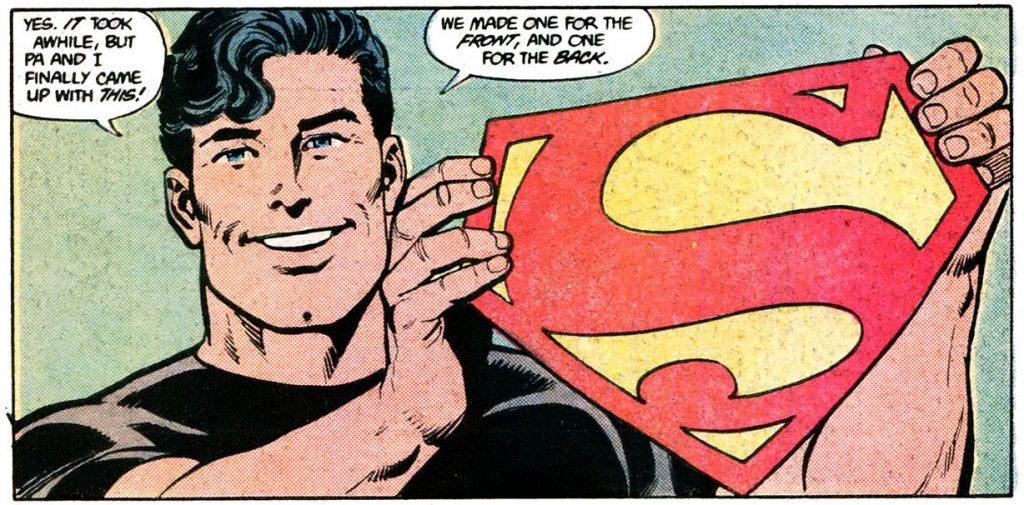
For a totally fresh start, it’s worth taking a look at The Man of Steel by John Byrne. After DC’s first line-wide reboot in the 1980s, Byrne reinvented Superman for a new generation, taking the hero’s powers down a notch so that he wasn’t juggling planets so easily. He also changed Clark Kent, so he was less of a cartoonish caricature and more of an everyman. He was charming, and you could understand why Lois liked him — things that hadn’t really come through to a lot of readers in the pre-Crisis on Infinite Earths comics.
Byrne’s The Man of Steel takes Krypton from a fantasy world with super-characters in colorful tunics to a cold, clinical world that worshipped science. The version of the world seen in both Man of Steel (the movie) and Krypton (the TV show) owes quite a bit to this miniseries, and the era of comics that followed it.
Which, it should be noted, was a great era of comics. There are fansites and podcasts dedicated just to the Superman comics as they existed between 1986 (when The Man of Steel happened) and 1999 (when DC did a soft reboot of the line, and the first major moves away from Byrne-style continuity started to happen).
The first few years — with writing and art by Byrne, Marv Wolfman, Jerry Ordway, and George Perez — have been collected first in a series of paperbacks and then in a series of oversized hardcovers by DC, titled Superman: The Man of Steel. The collections are well worth a read, but as a starting point, the first volume of each will get you the actual The Man of Steel miniseries, which starts Superman and his cast off with a clean start.
Superman For All Seasons
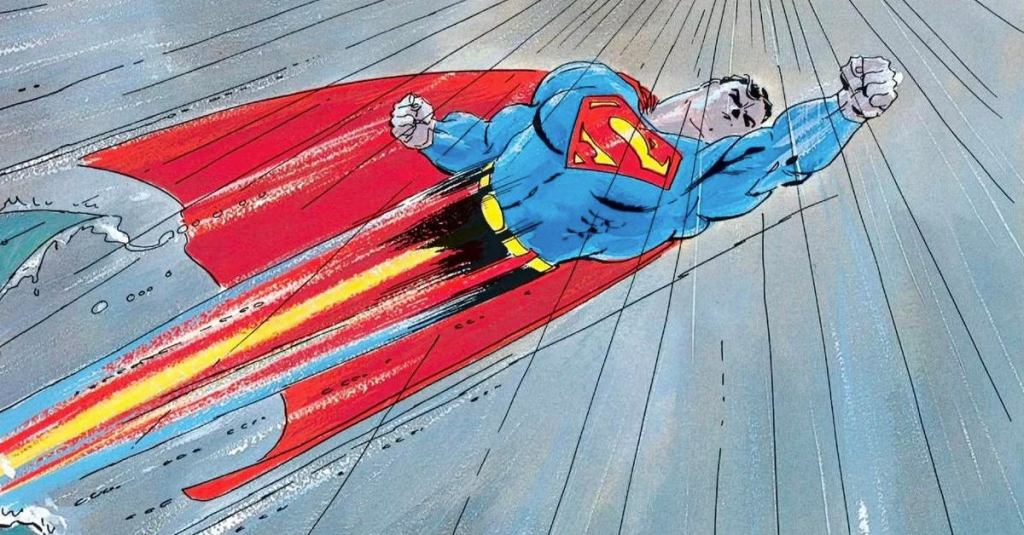
If you want something that pairs nicely with John Byrne’s The Man of Steel, but which can exist on its own as a bit of a lower-key story, you need to check out Superman For All Seasons. The comic, from Jeph Loeb and Tim Sale, followed the success of their Batman work and gave fans a “year in the life” look at Superman’s early career as a superhero.
One of the few items on this list that doesn’t look to reinvent continuity for itself, the story trades off narrators each “season” (the literal seasons of the year), with different parts of the story being told from the perspective of Pa Kent, Lois Lane, Lex Luthor, and Lana Lang.
The series was critically acclaimed, celebrated by fans, and has been a constant seller for years. It’s also credited as a major influence on Smallville, which Loeb worked on. It appears likely to be a big influence for Superman: Legacy, as the late Tim Sale’s visions of Superman are all over James Gunn’s social media accounts.
Superman: Secret Origin
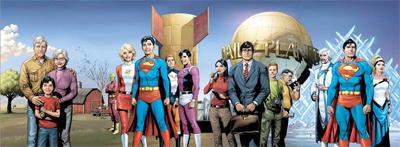
While The Man of Steel reinvented Superman for the ’80s and beyond, Geoff Johns and Gary Frank’s Secret Origin was the definitive origin story for the character circa 20 years later. Following the reality-shifting events of Infinite Crisis, Superman’s origin got a tweak.
Part of the agenda behind the miniseries was to restore some of the pre-Crisis on Infinite Earths elements that had been lost or abandoned during the Byrne reboot and the years that followed, including Superman developing powers when he was younger and having adventures with the time-traveling Legion of Super-Heroes.
The artwork is beautiful, and Johns is one of those writers who has a good handle on the balance between lore and character, managing to build up the world without feeling like Superman is a cardboard cutout standing in the middle of events happening around him. He has also done just enough Superman solo stories that if you were so inclined, you could find a number of Superman comics and graphic novels by Johns, all the way up to the universe-altering Doomsday Clock, and create yourself a pretty compelling reading list with Secret Origin as your starting point.
Other origin stories
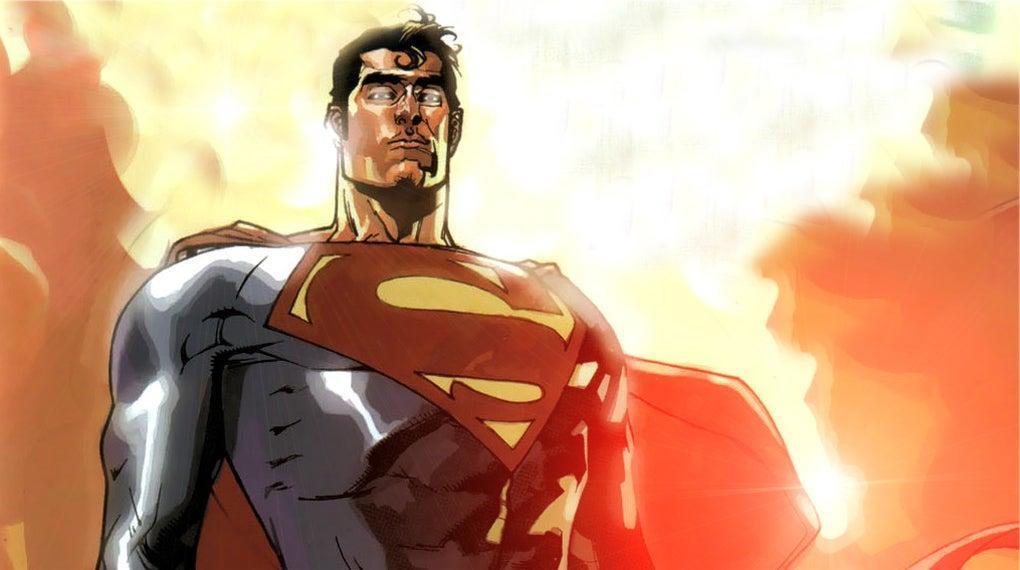
Here’s a secret: reinventing Superman is such a dicey idea that DC hasn’t let it happen very often…and when it does, they’re generally very good reading. The Man of Steel and Secret Origin provide the best bang for your buck, the freshest starts, and the most compelling overall narratives, but books like Superman: Birthright (by Mark Waid and Leinil Francis Yu) or Superman: Year One (by Frank Miller and John Romita, Jr.) are strong in their own right. The early volumes of The New 52’s Action Comics and Superman titles, from creators like Grant Morrison, George Perez, and Keith Giffen, are pretty solid, as well.
Man and Superman
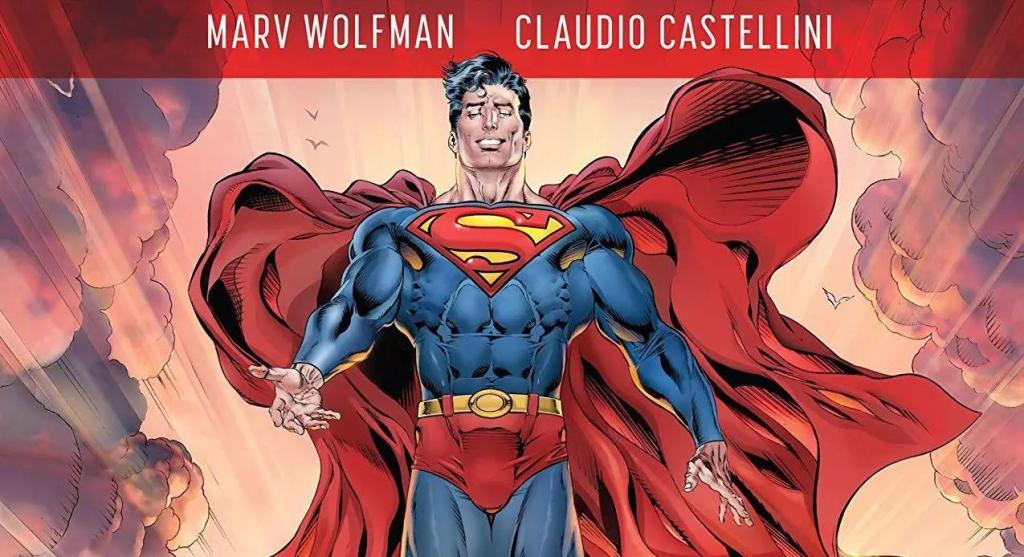
Originally created as part of the 2006-2008 series Superman Confidential, which was an anthology series featuring stories that were dubiously canonical and all took place in the early days of Superman’s career, Man and Superman was written by Marv Wolfman and featured art by Marvel vs. DC artist Claudio Castellini.
The story was never published as part of Confidential, which was cancelled before it could see the light of day, but years later, it was released as a stand-alone graphic novel in 2019.
The graphic novel, which also featured colors by Hi-Fi and letters by Tom Orzechowski, centers on the time between when Clark Kent came to Metropolis from Smallville and the day he finally put on the Superman costume for the first time.
As such, much of the story is a contemporary repaint of familiar beats: Clark meets Lois, Perry, Jimmy, and Lex Luthor for the first time throughout the life of the story; he struggles to make an impression with Perry and land a job at the Planet; he struggles with the pressures of his super-senses being inundated with the cries of millions of Metropolitans. It is done through an intimate point of view, though. Comparing it to something like John Byrne’s The Man of Steel, Wolfman’s story feels like it is being told to us by Clark, rather than relayed to the reader through an intermediary. And with relatively few super powers on display, it makes him uniquely human, relatable, and explores a fairly low-key, very human mystery.
It’s available digitally in both a 100-page “super special” and a hardcover Deluxe Edition graphic novel featuring behind-the-scenes content. I’d recommend that one, if only because my review is literally quoted on the back of it.
Dan Jurgens’s Superman
It’s difficult to overstate how good writer/artist Dan Jurgens is at writing Superman stories. Jurgens took over The Adventures of Superman in 1989, and remained on the character as a writer, artist, or both for a decade. During that time, he created numerous characters who have had an enduring impact on the Man of Steel’s mythology, including Doomsday (the monster who killed Superman) and Hank Henshaw, a seemingly-one-off character who would later become the Cyborg Superman.
There are a great many terrific Dan Jurgens Superman stories from that decade, but the post-Byrne era was set up in an interesting way: the four monthly Superman comics were treated as one comic with multiple creative teams, meaning that great stories like The Day of the Krypton Man, Time and Time Again, and Krisis of the Krimson Kryptonite weren’t necessarily stories written or drawn by one creative team. Jurgens distinguished himself in part by being the guy whose comic was called Superman for a lot of that time, and by working on big event stories outside of the main line, such as Superman/Doomsday: Hunter/Prey, which was the first “rematch” between Superman and Doomsday after his death in the Jurgens-written (and drawn) Superman #75 a few years before.
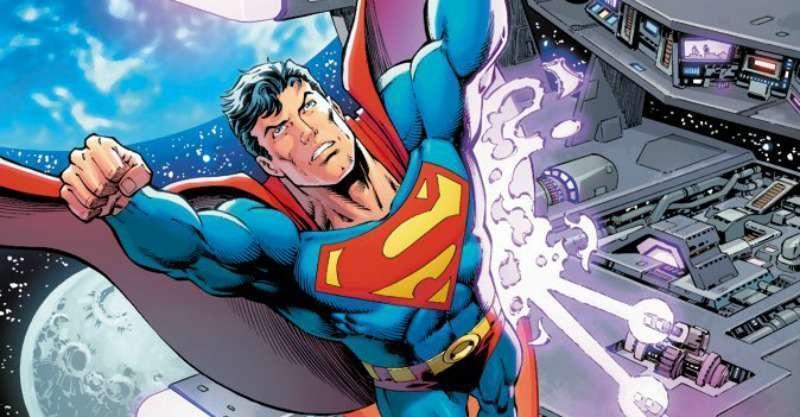
Jurgens would occasionally return to the character, either for event stories, anniversary celebrations, or stand-alone tales. After George Perez left Superman in 2012 — one of the first signs that DC’s New 52 publishing initiative was in trouble — Jurgens was called in to keep the ship afloat until DC figured out a new direction for the title. But it wasn’t until the end of The New 52 and the start of the “Rebirth” era that Jurgens got to really shine again.
In Superman: Lois and Clark, Jurgens did some incredible character work. The story is one of the best Superman stories in years, with an older version of Clark and Lois, hiding in a new universe that isn’t their own, raising their son Jonathan in secret. When the New 52 Superman (the “real” Superman of that universe) died, Jurgens’s older version had to step up to replace him as part of DC’s line-wide “Rebirth” launch.
Jurgens’s Superman: Lois and Clark is a great stand-alone read, both for nostalgic fans of his ’90s and work and for casual fans who want to see Superman and Lois doing cool, low-key things that build their characters and relationship. Jonathan Kent, introduced in that storyline, is a delight, and it’s a shame we didn’t get more stories of him in his youth.
After Lois & Clark, Jurgens took over Action Comics for a while, turning the title over to megastar writer Brian Michael Bendis after the latter defected from Marvel just in time for the comic’s 1,000th issue. There are three deluxe hardcovers featuring writing by Jurgens with art by a number of big-name artists, and it’s some truly great Superman storytelling. It might feel daunting to get into Rebirth, since their philosophy that “everything counts” might feel like it creates unnecessary complications, but there’s plenty of recaps to tell you all you need to know.
You can see our breakdown of some of Jurgens’s best Superman stories here.
Superman & Son & the Super-Sons
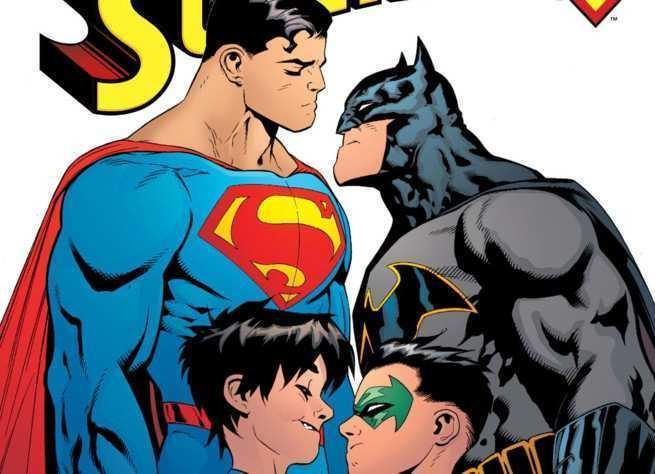
Writer Peter J. Tomasi has worked on two of the most popular and influential Superman stories of the past decade: the Rebirth run of Superman, and the Super-Sons stories. They’re both pretty great reads, and neither needs a ton of backstory (although what is needed, gets provided toward the beginning of Superman: Rebirth.
Once the Rebirth revival happened, Tomasi and artist Patrick Gleason picked up where Dan Jurgens had left off, telling stories about Superman, Lois, and their son Jon living on a farm. The family aspect gave the book a very different feeling to Jurgens’s widescreen action over in…well…Action Comics, and fans responded really positively to having two very good, but very different, Superman comics happening at the same time.
Tomasi’s characterization of Jon Kent and the fun he was having learning his powers as a kid, lent itself to further exploration. With artist Jorge Jimenez, he launched a Super-Sons series that teamed Jon with Damian Wayne, retooling a classic pre-Crisis idea and modernizing it with the jubilant Jon Kent and dour Damian Wayne.
Superman: Up in the Sky
About five years ago, DC started to try to expand their market presence outside of comic book retailers by offering 80-page giants inside Walmart stores. Each comic featured original lead stories as well as reprints of fan-favorite titles. Some fine stories came out of them, by some of DC’s most popular creators, but by far the most notable was the story titled Superman: Up in the Sky, from writer Tom King and artist Andy Kubert.
Superman: Up in the Sky is the kind of story that was perfectly suited to the Walmart books, which were in turn designed to attract and keep new readers. So to put it on a list like this…well, it served its original purpose perfectly. It isn’t bogged down by continuity, features relatively few well-known Superman villains, and takes the hero outside of Metropolis for most of it, essentially stranding the audience with Superman as the only real point of reference.
It tells the story of Superman traveling to space in order to save a girl abducted by aliens, and…well, that’s it. Lots of cool stuff happens, some incredible action set pieces drive the story, but it’s really all about how Superman’s drive to help those in need is boundless.
King recently shared this page, which is spoilery but also a perfect encapsulation of what makes the story special, on his social media pages:
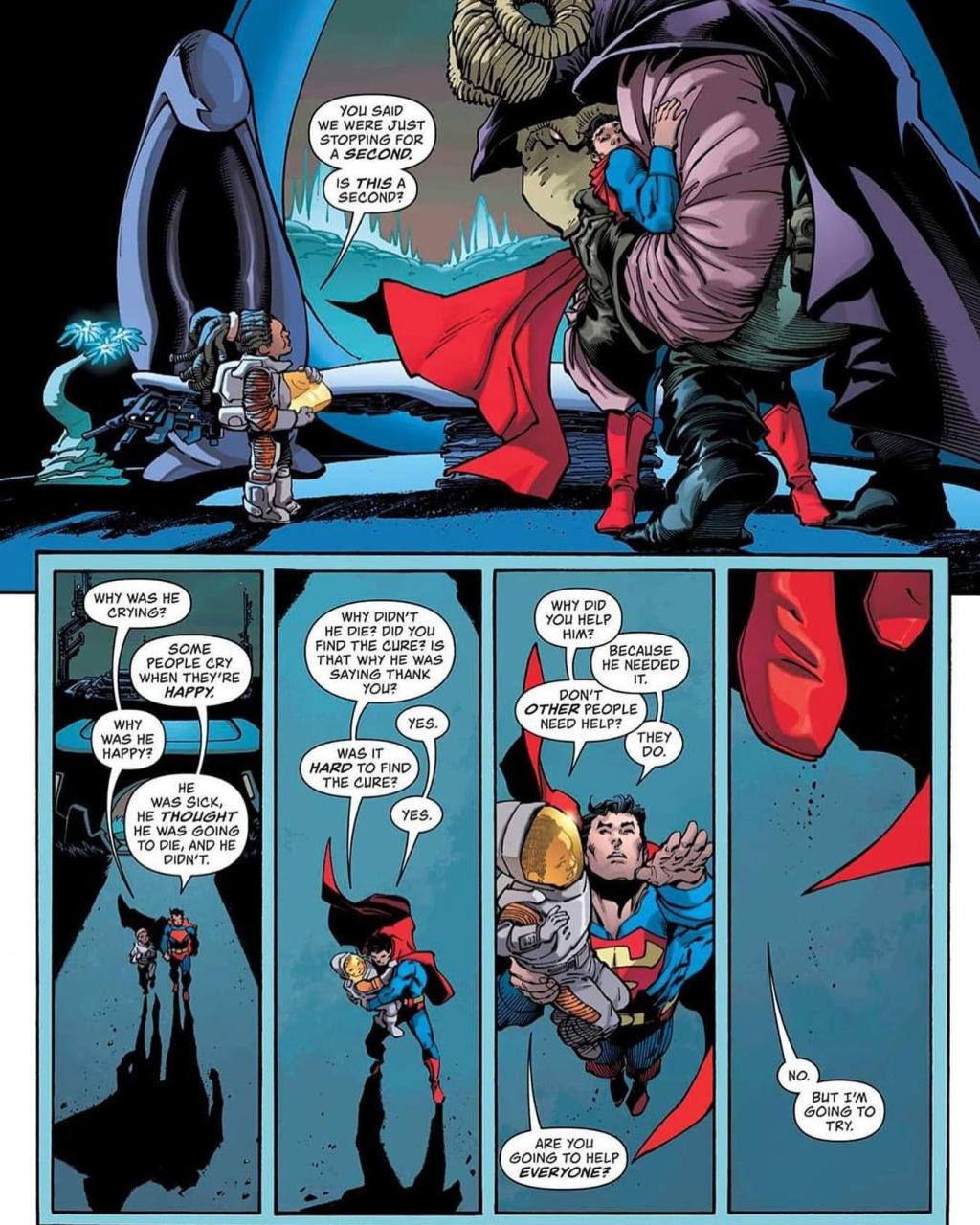
Superman: S–t Gets Bleak Stories
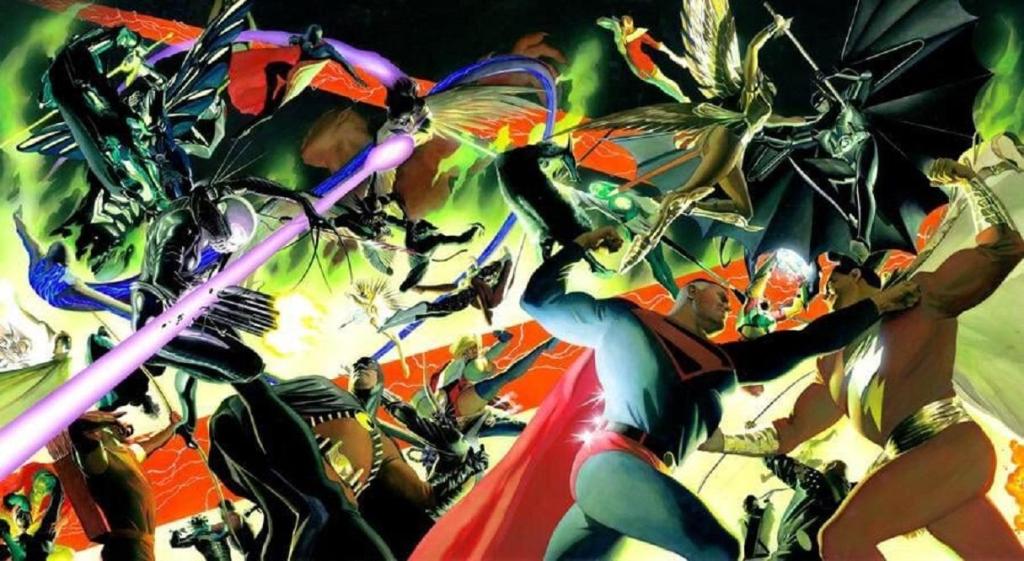
Batman is Dark. Superman is Light. The “S” literally stands for hope (at least in some versions of the story). So…why is it that some of the best-loved Superman stories of all time are shockingly dark?
Well, to quote Brandon Routh’s Superman in The CW’s Crisis on Infinite Earths adaptation, “Even in the darkest times, hope cuts through. Hope is the light that lifts us out of darkness.”
That’s an appropriate place to start, because Routh’s Superman is an adaptation of one of the classic “bleak” Superman stories that really works.
Yeah — making Superman dark doesn’t always work for the character. You get things like Superman at Earth’s End, which is just infuriatingly bad, and there’s stuff like Injustice: Gods Among Us, which is entertaining enough but kind of a slap in the face to the character. But stories about heavy subjects don’t always go badly for Superman — especially when they’re non-canon.
The two best examples of this are Kingdom Come, and Superman: Red Son. In Red Son, Superman serves as the boot for an authoritarian government after his rocket crashed in the Soviet Union during the Cold War instead of Kansas. From writer Mark Millar, the dark story turned out surprisingly hopeful in the end. It has been popular enough to spawn sequel stories, an animated movie adaptation, and inspire a season of Supergirl.
Kingdom Come is even more notable: the ’90s story was written as a push-back against ultra-violent antiheroes who were rising in popularity, and to answer the question of what purpose a character like Superman serves in an increasingly violent and amoral society. The answer: That’s when he’s even more important.
Superman, forced into retirement by grief and shame after The Joker killed his friends at the Daily Planet and a violent antihero murdered The Joker in retaliation, is brought back to the world when a nuclear accident takes out a big chunk of middle America, including Kansas, where Superman grew up. He re-forms the Justice League, bringing older heroes out of retirement in order to try and bring their violent and self-centered successors to heel, and ends up in a kind of superhero civil war against forces led by Lex Luthor, culminating with a second nuclear disaster that wipes out many of the world’s heroes both young and old.
When you lay it out like that, it’s a pretty bleak story — but Alex Ross and Mark Waid managed to make it not just entertaining but inspiring, and to show a generation of fans who thought “the best Superman story is the one where he dies” that there’s a lot more to him than that.
All-Star Superman
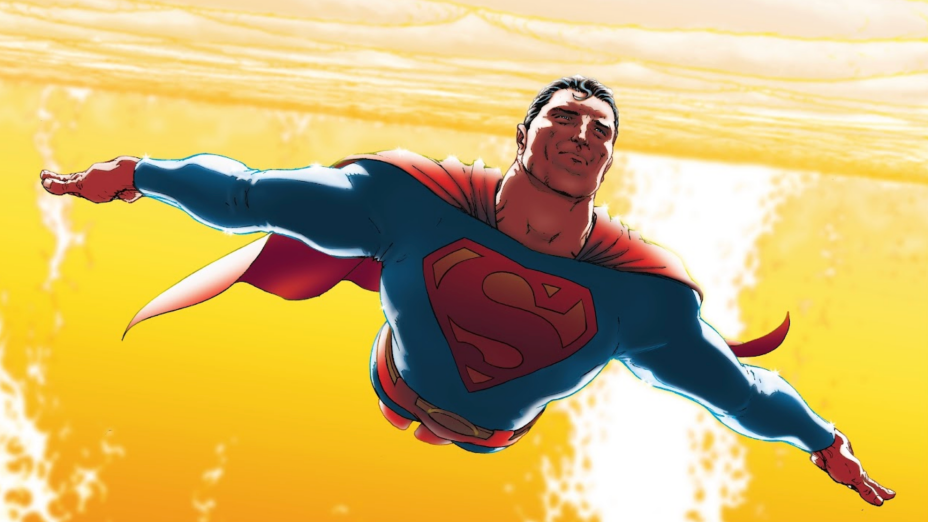
This 12-issue maxiseries is one of the best and most accessible Superman stories ever told. From writer Grant Morrison and artist Frank Quitely, it brings back the weirdness and wildness of the pre-Crisis Superman, and just…lives with that weirdness, not trying to temper it or make sense of it at all.
In the story, Superman is dying, and he knows there’s nothing he can do about it. He undertakes a superheroic version of the labors of Hercules, telling great, stand-alone stories that show what Superman means to the world and to those around him. Along the way, he tries to do the thing that has always seemed to be out of even his own reach: redeem Lex Luthor. That alone is such a high-minded and hopeful concept that it deserves a spot on the list.
The comic has had a big impact on other creators since it was released, and has spawned an animated movie adaptation as well as taking up almost as much wall space at James Gunn’s production offices as Superman For All Seasons.
Let’s Get Meta
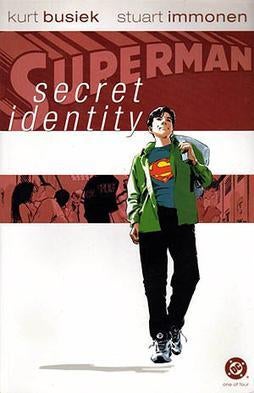
Kurt Busiek teamed with longtime The Adventures of Superman artist Stuart Immonen to create Secret Identity, a story in which a boy named Clark Kent, living in the real world where the are no superheroes, learns that he is, in fact, Superman, having been brought to this world through some kind of bizarre fluke.
The story is an exploration of what it would be like to become Superman…in a world where people already knew about the idea of Superheroes from fiction, and he wasn’t blazing a totally new trail. He tries to keep his secret while helping people, and eventually ends up working with and for the government to help people in emergencies around the world.
A few final thoughts
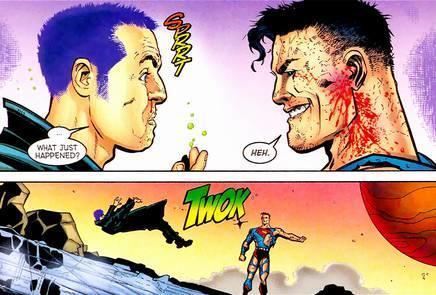
These don’t quite fit the same mold as the stories above, but are nevertheless great stand-alone Superman tales for anybody who wonders what the Man of Steel’s appeal is:
- Superman: Earth One. Originally designed as part of DC’s “Earth One” line of alternative-continuity stories, it’s pretty obvious that this was designed to be adapted into a movie. You can see a lot of similarities between it and parts of Man of Steel, so maybe it kinda worked. The story itself, from J. Michael Straczynski, is…fine. The art by Shane Davis is more of a selling point. The world it introduces us to is pretty interesting, but most of what’s in there has already been done better in The Man of Steel, Birthright, or Man and Superman.
- Metropolis Mailbag. Ha! You thought we were done talking about Dan Jurgens! For two years in the early ’90s, Jurgens gave fans an unconventional, and very human, idea of what Superman does at Christmastime in a pair of stories titled “Metropolis Mailbag.” The concept of the first one revolved around Superman visiting the Thirty-Fourth Street Post Office (in Metropolis, not New York, although there’s a major one there, so it’s likely that’s why they gave it the address they did) and answering mail. Much any larger-than-life figure who gives hope to the public, Superman receives a lot of mail…and around Christmas, he would try to answer as much of it as he could, making a difference in the lives of everyday people rather than dropping buildings on the heads of supervillains.
The second story fell just after the 1992 “Death of Superman” story, so while the first dealt with the emotional toll that taking on a never-ending battle of a different type took on Superman, the second was more about the heroes of the DC Universe trying to get their heads around the kind of difference Superman made during his life. Both are great, and it’s worth considering whether any potential sequel to Superman: Legacy ought to be a Christmas movie that incorporates some of these ideas. - Action Comics #775. This stand-alone story, called “What’s So Funny ‘Bout Truth, Justice, and the American Way?,” is hard to suggest as a first-time Superman story just because it’s such an outlier…but it’s still incredibly good. Written by Joe Kelly, pencilled by Doug Mahnke and Lee Bermejo, and inked by a murderer’s row of talent, the story pits Superman against a team called The Elite — fairly close to DC’s own team The Authority — and challenged his moral code. The issue took a single issue of comics, set in the real DC continuity, to do essentially the same thing that Kingdom Come did for Superman’s character, but without nearly the body count.
- The Death and Life of Superman. Not a comic book, but a great starting point for reading the Man of Steel, this novel by longtime Action Comics writer Roger Stern does a great job of boiling down the first seven or so years of the post-Crisis on Infinite Earths era into a digestible story, and illustrating part of why the Death and Return of Superman story is so well-loved: it essentially served as a series finale to a half-decade’s worth of stories, paying off so many dangling plot threads and character introductions from the first few years of the Byrne era that it almost feels like it was done on purpose. It wasn’t, at least at the time, but the novel is able to twist things just a few degrees and give audiences the full experience.


